
How India's moon crash wasn't really a failure (op-ed)
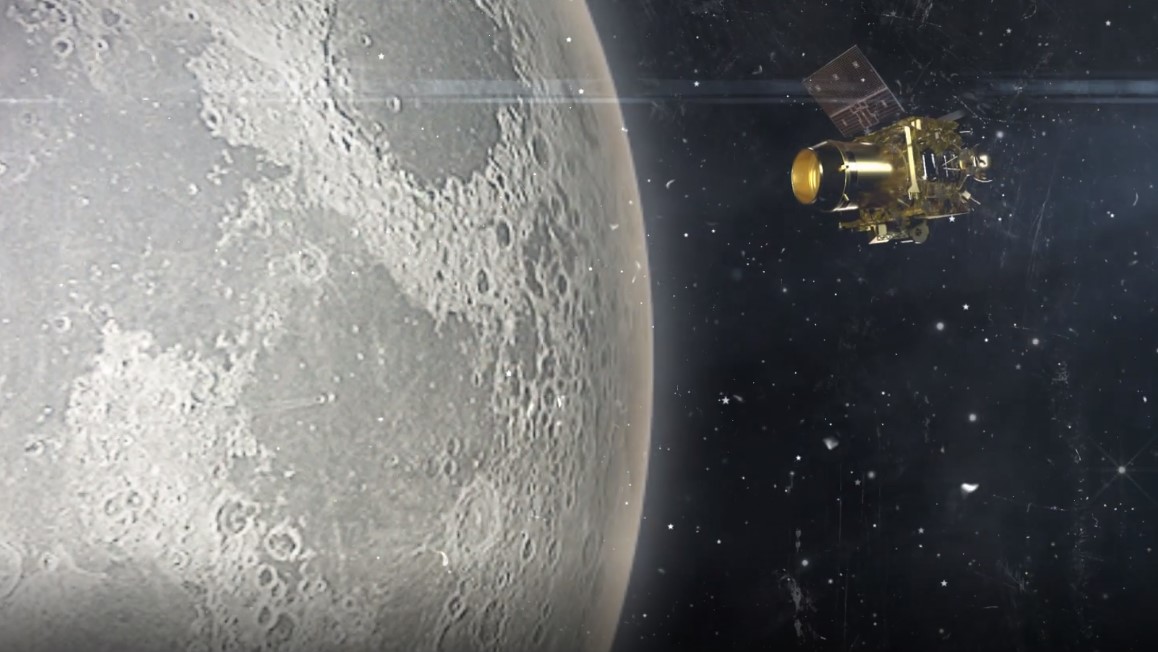
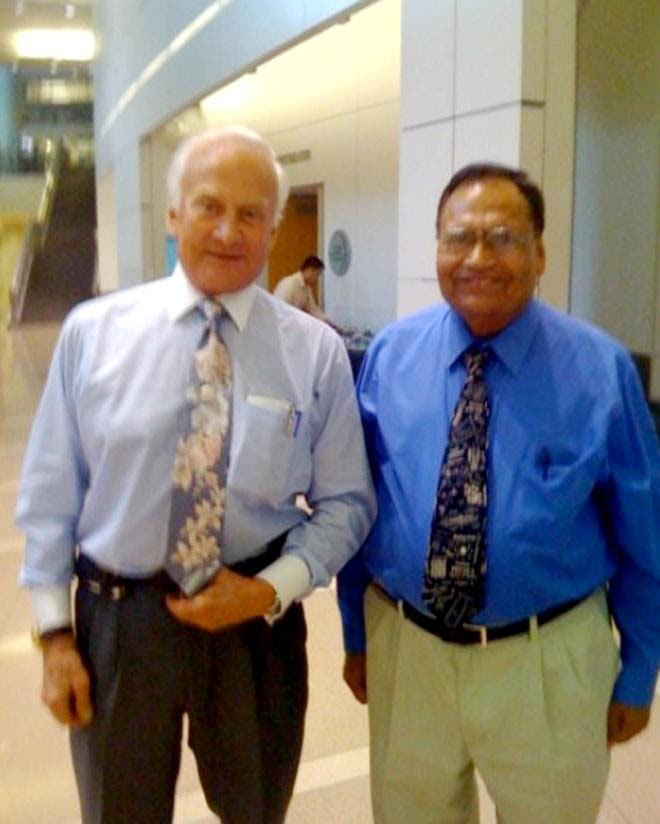
Dr. Ravi Sharma is a nuclear physicist who served as the scientific secretary for the Indian Space Research Organisation headquarters from 1973 to 1979. With extensive experience working with both NASA and ISRO spanning more than 50 years, Sharma has managed complex space missions, both robotic and crewed. Sharma earned NASA's Apollo Achievement Award in 1969 for his contributions to the first human moon landing and has received numerous awards from ISRO. He currently works as an enterprise architect consultant near Sacramento, California.
When India's Vikram lander crashed into the moon during the spacecraft's landing attempt in September, it was a significant setback for the Chandrayaan-2 mission and India's plans to explore the surface of the moon. However, the crash also provided a learning experience that may help the Indian Space Research Organisation (ISRO) succeed with its future space endeavors.
Since its inception in 1969, ISRO has achieved some tremendous feats in space, like launching the Mars Orbiter Mission around the Red Planet, putting the Chandrayaan-1 spacecraft into lunar orbit and successfully deploying an impactor onto the lunar surface. And the nation is currently working toward the goal of launching astronauts by 2022.
While many will call the Vikram landing incident a "failure," ISRO has plenty to gain from the mishap. As ISRO learns from its mistakes with Chandrayaan-2, the knowledge gained will help pave the way for successful future missions. Here, I'll recount some of the biggest accomplishments and most notable failures of India's space program and explain how each mission, successful or not, helped to make India one of the most prolific spacefaring nations in the world.
Related: India admits its moon lander crashed, cites problem with braking thrusters
The vision of Dr. Vikram Sarabhai, who founded ISRO in 1969, helped create a strategic road map for India's space program. In this decade, India placed its first satellites into orbit, ushering in an era of new technological capabilities, like enhanced weather forecasting (especially for monsoons) and satellite communications for phone, television and internet services. Thanks to satellite technology, India was able to begin mapping natural resources like water and forests, and the new satellite imagery also allowed scientists to monitor and manage agricultural land.
Sarabhai simultaneously chaired India's Atomic Energy, Space and Electronics commissions, which was no small feat for one man, and in collaboration with NASA, he set up the Thumba Equatorial Rocket Launching Station in the southern tip of India. The new launch site inspired native space scientists living abroad to return to India (for example, the future ISRO Chairman Udupi Ramachandra Rao, solid rocket grains developer Dr. Vasant Gowarikar and me).
Get the Space.com Newsletter
Breaking space news, the latest updates on rocket launches, skywatching events and more!
ISRO achieved progressive indigenization (or "Indianization") of satellites in low Earth orbits as well as geostationary orbits and launch vehicles with incremental steps. Several countries helped India in achieving its space capabilities; the U.S. gave initial sounding rockets to India to launch from Thumba, while the USSR Academy of Sciences provided initial low-orbit satellite subsystems and Soviet launch vehicles and Europe (particularly France) provided the geostationary satellite launch capability with the Ariane family of rockets.
NASA loaned its Applications Technology Satellite-6 (ATS-6) to ISRO in 1975 for one year for the Satellite Instructional Television Experiment (SITE), a project that aimed to bring educational TV shows and programs to viewers in the rural villages of India. The cost of the ATS-6 mission was comparable to the average cost of an Apollo lunar landing mission, around $400 million. The famous rocket scientist Wernher von Braun was instrumental in arranging this one-year loan to India, which was then emerging as a developing economy.
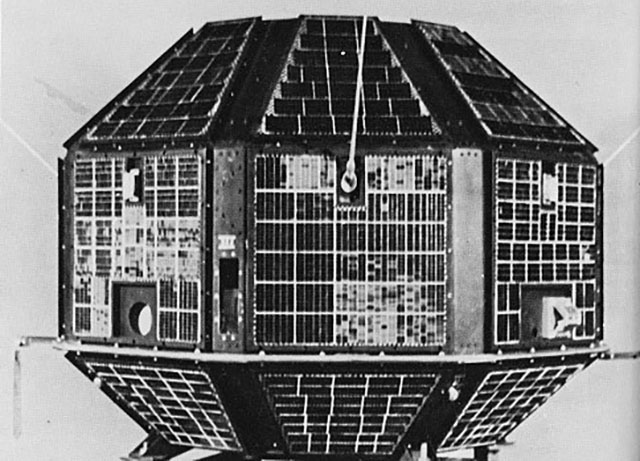
India's first indigenously built satellite, Aryabhata, launched on a Soviet rocket in 1975, with the purpose of conducting experiments in X-ray astronomy and solar physics. Then, in 1979, ISRO launched its second mission, called Bhaskara, which included two Earth-observation satellites. While India's first two satellites were launched to low Earth orbit (LEO) on Soviet launchers, most of the Indian-built satellites since 1983 have been launched on India's Polar Satellite Launch Vehicle (PSLV) and Geosynchronous Satellite Launch Vehicle (GSLV) rockets. Today, ISRO has 13 operational LEO satellites. In all, India has successfully launched more than 100 successful missions, and about two-thirds of those missions launched on Indian rockets.
The country's development of its satellite launch vehicles started with the Satellite Launch Vehicle (SLV-3), which launched on its first successful test flight in 1983. This rocket was India's first effort to build internal launch capability. Later developments included the PSLV and GSLV launchers, and most recently, ISRO revealed a prototype of the agency's new Reusable Launch Vehicle (RLV), a space plane that India will use for planned human missions to low Earth orbit.
Only one Indian citizen has ever been to space. Rakesh Sharma flew aboard the Soviet Union's Soyuz T-11 mission to the Salyut 7 space station in 1984. I wrote a 25-page proposal in 1975 recommending Indian participation in space shuttle and future space station missions that would have by now provided three decades of human flight experience to the country. However, the agency has plans to start launching astronauts in 2022 on its Gaganyaan spacecraft, which is currently in development.
A history of 'failures'
Like all major space agencies, ISRO has had its fair share of failures. From launch rockets that failed to reach orbit to satellites that didn't work according to plan, here are some of the biggest failures that ISRO has faced.
1st satellite reaches orbit, but instruments fail
Aryabhata was the first satellite that was assembled by ISRO, launching to orbit on a Soviet rocket in 1975. The USSR Academy of Sciences supplied many subsystems for the satellite as part of a cooperation with India. Unfortunately, due to a power bus failure, none of the experiments worked.
SLV-3: Off to a rough start
When ISRO first launched its SLV-3E1 rocket on an experimental test flight on April 10, 1979, the rocket soared for about 5 minutes before splashing into the Bay of Bengal.
The director of the Vikram Sarabhai Space Centre, Dr. Brahm Prakash, took responsibility and encouraged the SLV project director, A.P.J. Abdul Kalam, to keep trying, and the next SLV-3E mission, one year later, was successful. (Later, Kalam, my ISRO colleague, became the uncontested president of India.)
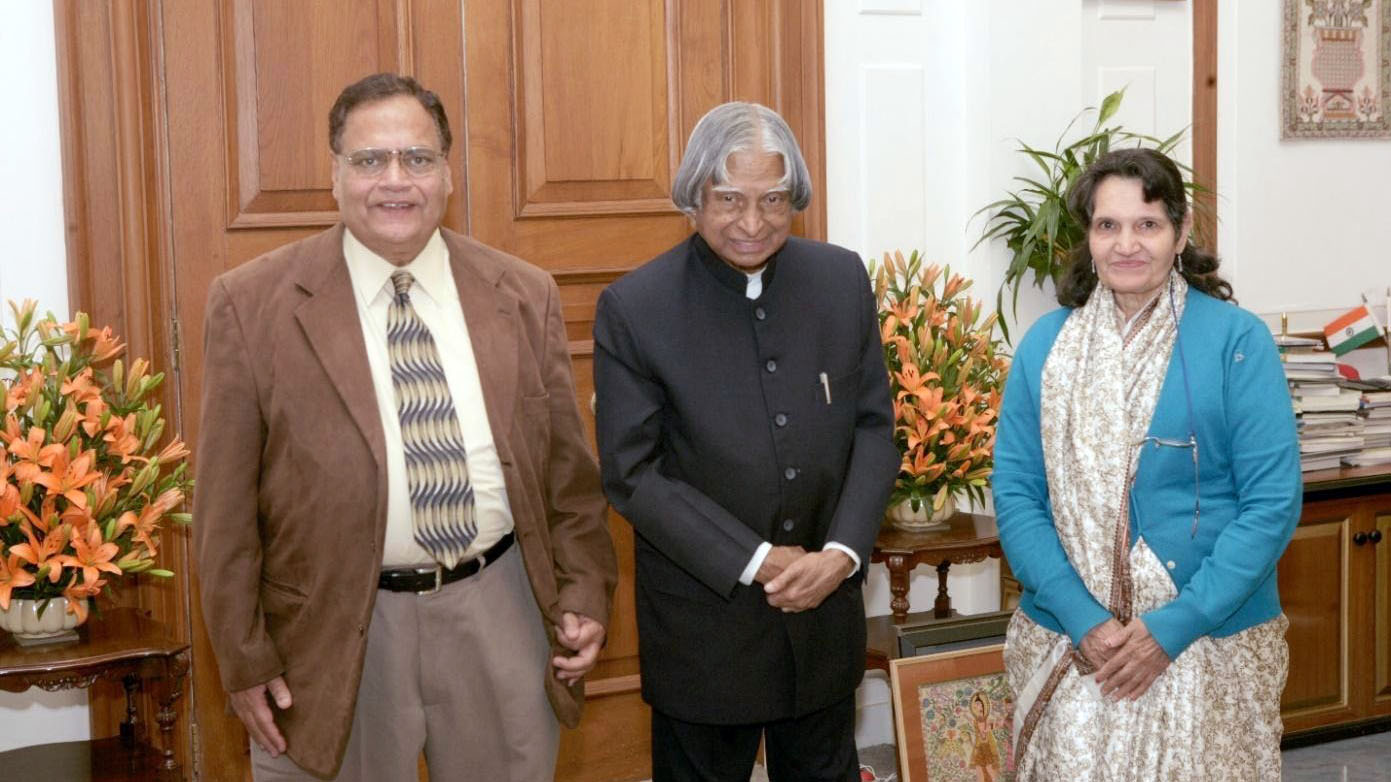
The SLV-3E launched on two more missions, in 1981 and 1983; the third mission was considered a partial failure because the experimental Rohini satellite onboard did not reach the desired altitude, orbiting for only nine days. Each of the four SLV-3E missions carried a small Rohini satellite. The first Rohini satellite to reach orbit lasted for over a year, and the one that flew on the fourth and final SLV-3E mission lasted for about seven years in orbit.
This experimental rocket laid the foundation for the development of bigger and better rocket boosters. Otherwise-nascent ISRO capabilities were limited to sounding rockets that conducted studies of Earth's upper atmosphere and magnetic field. In order to fulfill Sarabhai's strategic plan for enabling satellite communications and Earth observations, India needed to develop the capability to launch satellites to orbit or forever be dependent on procured (and often very expensive) launch vehicles from other space agencies. The SLV-3E series paved the way toward the PSLV and GSLV capabilities of today, and these new rockets cost a fraction of what it would cost to launch a similar rocket procured from an outside rocket manufacturer today.
Three troubled INSATs
INSAT, which stands for Indian National Satellite System, is a series of 24 geostationary satellites that have been used for telephony, TV, weather mapping, data and internet services since the 1980s. The first three of the 24 satellites failed. All of the meteorology, TV and telephony payloads had been piled onto a new and complex geostationary satellite design that had not yet been proven successful at the time — in other words, the technology wasn't ready. INSAT-1A failed just seven months into its planned seven-year mission, and 1B and 1C failed or operated with reduced capacity before the end of their planned lifetimes.
This was one of the reasons I decided to resign from ISRO. In my time at NASA, during 1968-72, I experienced reliable systems engineering in complex projects such as Apollo; that, and the way i saw NASA assess risks made me stand up at ISRO in 1978-79 and leave the organization because of this unproven design. The clubbing of all three payloads and need for fine pointing of the meteorology payload, called the Very High Resolution Radiometer (VHRR), stressed the launch capacity by restricting each satellite's maximum weight and reducing its station-keeping fuel capacity. Out of 24 INSAT satellites launched so far, seven have fully or partially failed and 11 are currently in operation.
One of the reasons for improved success rates in INSAT satellites comes from improvements in payload capabilities in launch vehicles, such as the Ariane and PSLV/GSLV, which can launch heavier satellites and are more fuel efficient.
India crash-lands on the moon
India's first moon-landing attempt, though it ended with an unintentional crash-landing, was a tremendous accomplishment for ISRO. The Chandrayaan-2 mission — which consists of an orbiter, the Vikram lander and a rover named Pragyan — may not be able to study the lunar surface up close, but the orbiter will continue to study it from afar for years to come. Meanwhile, ISRO engineers are studying what went wrong with the Chandrayaan-2 landing to help improve the design of India's next moon-landing attempt.
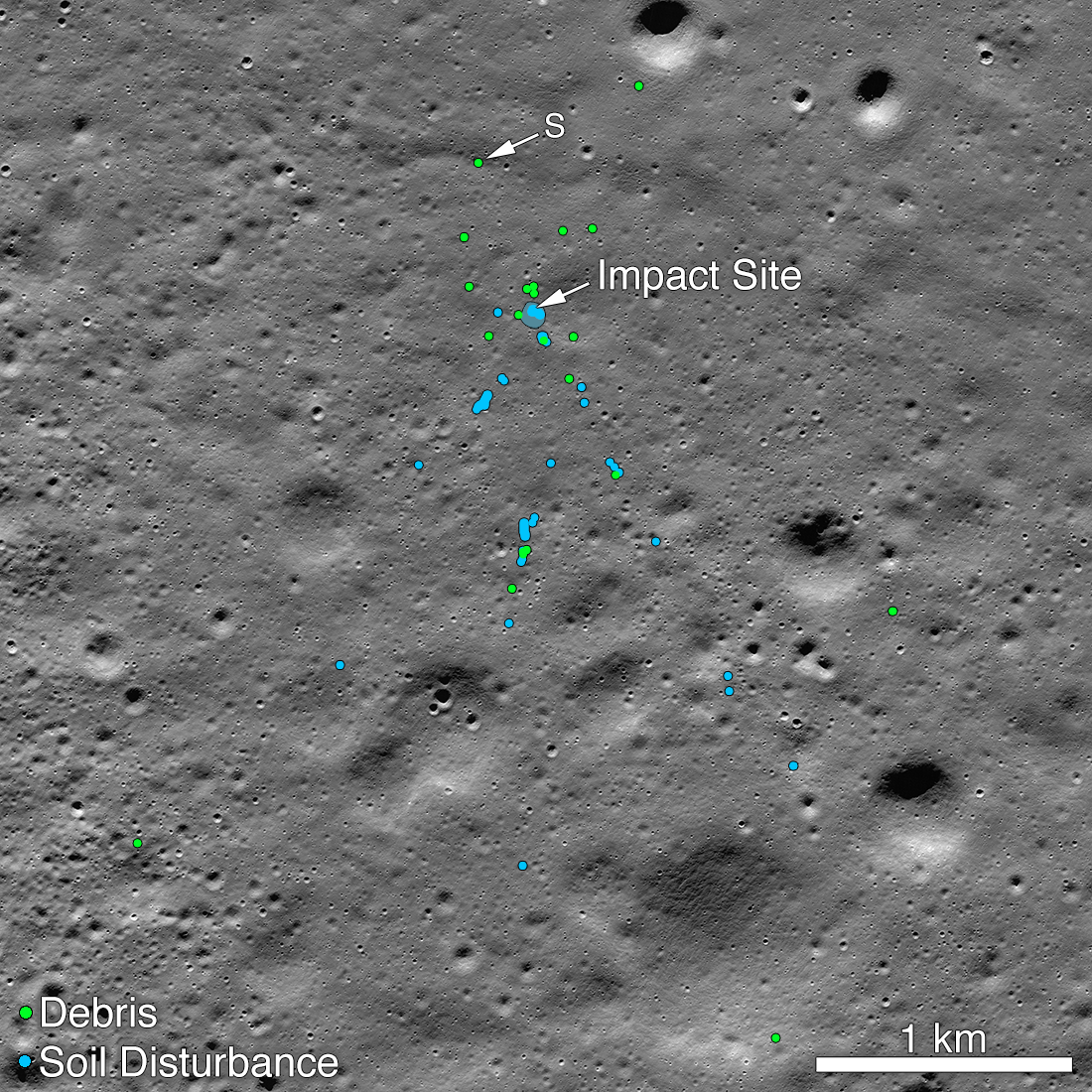
The mishap occurred in the final phase of Vikram's descent, when a problem with the spacecraft's braking thrusters forced it to make a hard landing 0.3 miles (500 meters) from its target landing site, according to a statement from Jitendra Singh, the minister of state for India's Department of Space in November. On Dec. 2, NASA released a photo of Vikram's crash site from its Lunar Reconnaissance Orbiter, which has kept an eye out for the lander since it went missing after the crash. ISRO scientists are also looking for Vikram on the lunar surface using the High Resolution Camera payload on the Chandrayaan-2 orbiter.
Although Vikram can't beam any data back to Earth now, ISRO can still make use of the data the spacecraft sent to Earth until it lost communication just minutes before the scheduled landing. Vikram was transmitting data for about 12 minutes before the crash. The Chandrayaan-2 orbiter also helped to relay data from Vikram down to Earth, and the orbiter has supplied its own images and instrument data collected before, during and after mishap.
What went wrong?
ISRO now faces the challenge of fully resimulating Vikram's landing using received telemetry and tracking data. By comparing that information with the mission's planned trajectory, the agency will try to pinpoint the cause of the problem and exactly when the problem occurred. ISRO can use this data to determine the physical stress on the lander's mechanical and electronic systems, as well as the vibration, shock and thermal effects on the spacecraft's subsystems during braking phases. The telemetry data, when analyzed and time-sequenced for the state of health of each subsystem, will provide detailed timelines of both planned and unplanned events during the crash.
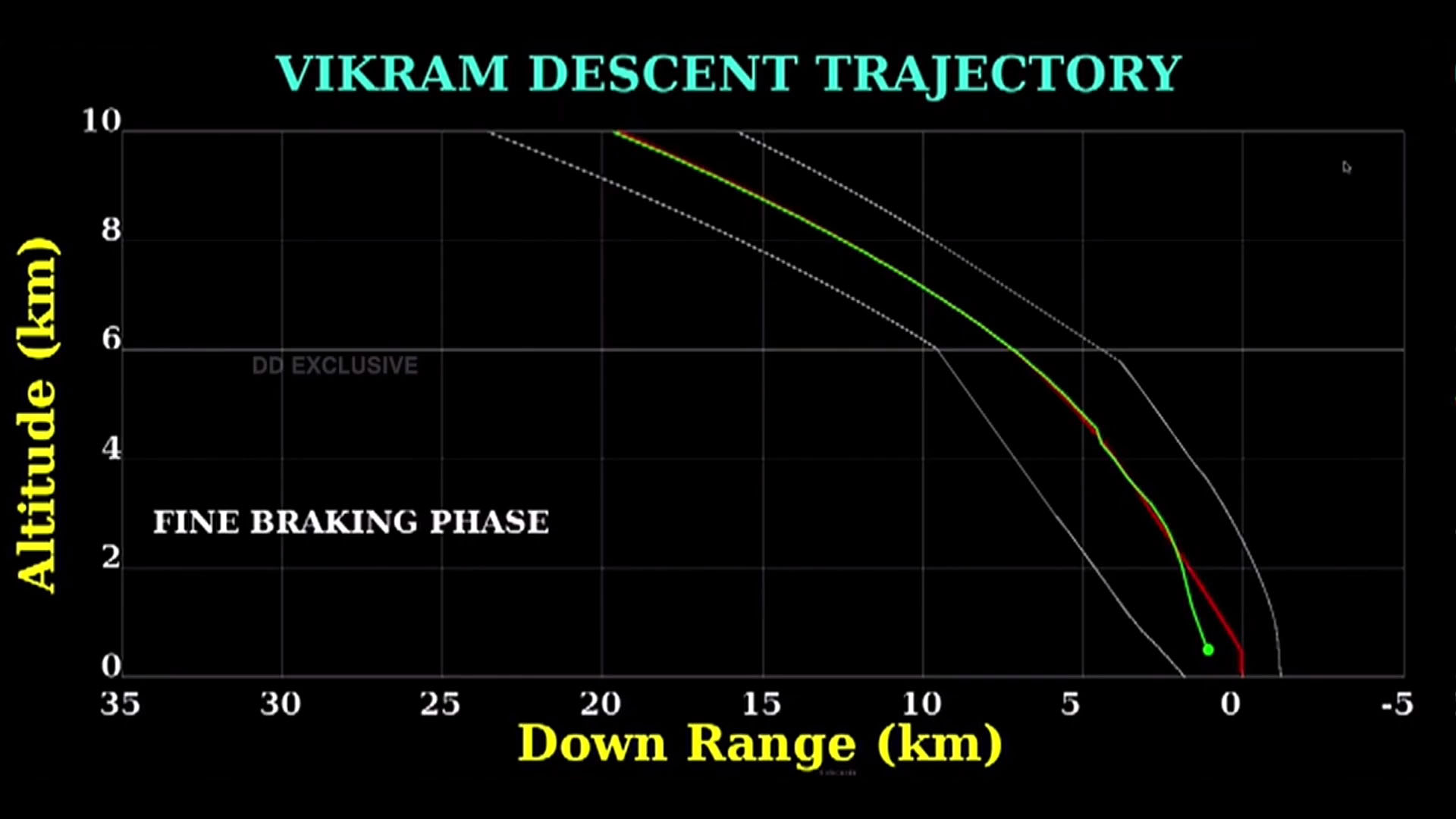
This analysis would include controlled start of the descent stage and the 12 minutes of data transmitted before communication was lost. It would also include a deeper analysis of how the spacecraft's subsystems were performing during the first (minor) glitch, or deviation, that most likely triggered the unfortunate chain of events, as well as the second (major) glitch that resulted in the short-range hard landing. The first glitch probably triggered some anomalies related to subsystem and thruster control that amplified and led to the mishap clearly seen as second glitch or deviation from planned trajectory around an altitude of 1.2 miles (2 kilometers) above the lunar surface.
Better understanding these details of Vikram's landing failure will progressively improve additional data and supplementary sensors needed for future missions.
Learning from Vikram's mistakes
Although ISRO may have lost its lunar lander, the agency gained some valuable experience from the ordeal. ISRO made progress on liquid propulsion, this being the first time that India has attempted a soft landing — and its first experience using liquid propulsion-based retro-rockets to slow down a speeding lander before touchdown. This technology could be used not only for future robotic landers, but also for human missions to the moon.
Even when a landing sequence is preprogrammed and information about the landing site is constantly updated with new data and imagery from the orbiter imagery using artificial intelligence (AI), the actual descent performance data requires a reliable communication system for relaying the most up-to-date information to ground controllers on Earth, who can adjust the lander's course in case it experiences any deviations from its planned descent trajectory.
When Vikram lost contact with Earth, and when a problem occurred with Vikram's reverse-thrust engines, this engine problem could not be fully verified. Thus, other data and visual sightings only can verify the condition of Lander integrity. ISRO has to engineer more redundancy in its communications systems for future missions, even if it means sacrificing a spacecraft's weight and power capacity.
More moon-landing practice
Chandrayaan-2 was not to be the only soft-landing mission; the next lunar landing mission, Chandrayaan-3, is tentatively scheduled to launch in November 2020. India will need to soft land often and even be able to take off from the lunar surface to fulfill its ambitious goals for human space exploration and sample returns.
Only one week after the Vikram mishap, I submitted a proposal online for the launch of another lander that would serve as a follow-up mission mission to Chandrayaan-2. Called Chandrayaan-2A, the mission would demonstrate a soft landing using a lunar lander with optional ascent capabilities that would allow the spacecraft to "hop" on the moon. This mission will improve the technology ISRO needs for successful landings in the future, and it can help ISRO to master the landing process with a simple, low-cost technology-demonstration mission before launching more expensive payloads to the moon or Mars. The success of this mission would not only benefit all of India's future landing missions, but it may also serve as a much-needed boost to team morale!
This "piggyback" lunar lander mission could ride along on an already-planned launch using a PSLV or GSLV rocket carrying other payloads to geostationary or low Earth orbit, or it could launch on its own rocket. This would be a less complex mission than Chandrayaan-2 or -3, carrying just a lander, no orbiter. This lander could test other descent options that put less stress on the spacecraft, such as a longer descent period or a different angle of descent. The descent stage (and possible ascent mode, using restartable engines) ought to be fully and successfully tested before ISRO attempts to send more spacecraft to the lunar surface.
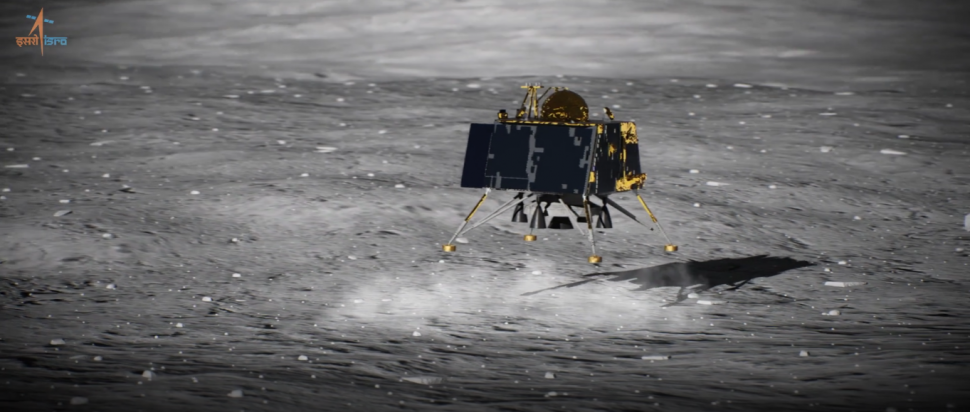
ISRO needs to test a lander in Earth's atmosphere by dropping it with a drone or other aircraft. It is necessary to switch from hard braking to fine braking during testing and then soft landing under Earth's gravity.
This reminds me of what Neil Armstrong did during the Apollo program while practicing at piloting the lunar module. On May 6, 1968, Armstrong bailed out during a test flight of the Lunar Landing Research Vehicle when he lost control of the craft, ejecting himself and narrowly avoiding a fiery explosion. Since ISRO's lander is uncrewed, similar atmospheric effects are to be accounted for as was done for the Apollo lunar module tests.
ISRO also needs to test for vibrations and thermal effects on electronics, control and guidance before and during the switch from a rough to a fine reverse-thrust mode, which happens as the spacecraft slows down upon descent. We also need to test these things when the lander is hovering just above the surface, both at the end of its landing and after lifting off for a controlled "hopping" maneuver.
With ISRO's strong track record of launching successful space missions, it's safe to say that the proposed lander can be ready to launch in about a year with most of the same but well-tested hardware and software as Chandrayaan-2 and with some modified communication, control and guidance subsystems.
This mission will allow ISRO to reuse Chandrayaan-2 infrastructure as well as the Chandrayaan-2 orbiter, which would relay data between the Chandrayaan-2A lander and Earth, just like it did with Vikram. The lander can also reuse orbiter imaging (which employs AI pattern recognition) for accurate and detailed maps of the targeted landing zone. That same AI software can also help the lander "hop" around to multiple landing sites during tests of the restartable thrusters.
A quick lander and ascent ("hopper") mission can likely be achieved at an optimized cost of less than 3 billion rupees (equivalent to about $42 million) by sharing the launch vehicle cost with other payloads. The partial cost of a launch vehicle allocated to Chandrayaan-2A lander can be approximately 1 billion rupees ($14 million). A lander with robust subsystems, especially descent engines with built-in redundancies for braking and hovering, can cost approximately 2 million rupees ($28 million). Experiments for detecting surface structure and soil analysis that perished with the Vikram lander can be duplicated on this lander also, and it can even carry a replica of the Pragyan rover as well!
This Chandrayaan-2A mission can be done in the 2020-21 time frame, providing the technology demonstration of a soft landing while the earlier designated and planned Chandrayaan-3 mission, a collaboration between ISRO and the Japan Aerospace Exploration Agency (JAXA), is being designed and built. That lander will have to mate with Japan's new H3 rocket at a launch site in Japan and also work with a new orbiter and rover.
Chandrayaan-2A will serve as a precursor mission to a much more complex integrated mission, the joint ISRO-JAXA Lunar Polar Exploration Mission, which will send a lander and a rover to the moon's south pole as early as 2024. The proposed Chandrayaan-2A mission could provide surface data three years earlier, using current infrastructure and with very small incremental effort. And by testing a new ascent system, Chandrayaan-2A could provide ISRO with the capability to conduct sample-return missions from the moon and other planetary destinations. It is especially important for ISRO to soft land on the moon in a mission like this in light of the new international "moon rush."
ISRO has a bright outlook
One needs to be forthright about admitting failures.
If a lunar lander was sent for a technology demonstration mission as well as for science investigations, then the Vikram lander part of the mission was a failure and ad-hoc percentages of success and failure rates are not the last word. Similar frankness was needed for reporting INSAT and Aryabhata experiments failures.
To succeed in space exploration, investments need to be increased in research and innovation support. At present, these are, in many sectors, very small in India compared to China, for example, resulting in fewer publications and global research positions occupied by Indian scientists over recent decades.
In the new, vibrant India, the spark in the eyes and minds of young Indians is an indication of tremendous energy in science- and technology-related fields, the same enthusiasm that was shown during the Chandrayaan-2 mission. This enthusiasm can yield much better avenues and opportunities for young professionals. It is sustaining this energy that will truly kindle science and technology capabilities and boost research and development contributions on a global scale. This energy had been missing in India for the last two decades and is a reason that the country is falling behind China, for example. Less tangible benefits of such missions include igniting the minds of young scientists and technologists who are power engines for the future of India.
Not only has India become a spacefaring nation capable of launching its own satellites, but these missions also — both the successes and the failures — inspired a new generation of young scientists who will carry on this work in the future.
Like in Apollo 13, sometimes the failure of a mission is an option, if that's what's needed to preserve crew safety. Both in space and in life on Earth, every failed mission has its silver lining, with new experiences gained and lessons learned. These improved capabilities in Apollo 14-17 missions. And as ISRO has demonstrated, every failure creates an opportunity to grow, learn and succeed later on.
- Do Not Fear Failure. The Lessons are Important. (Op-Ed)
- India Looks Beyond the Moon to Mars, Venus and Astronaut Missions
- 'We Came Very Close:' Indian Prime Minister Modi Lauds Chandrayaan-2 Team After Moon Lander Goes Silent
Follow us on Twitter @Spacedotcom and Facebook.

Join our Space Forums to keep talking space on the latest missions, night sky and more! And if you have a news tip, correction or comment, let us know at: community@space.com.
Dr. Ravi Sharma is a nuclear physicist who served as the scientific secretary for the Indian Space Research Organisation headquarters from 1973 to 1979. With extensive experience working with both NASA and ISRO spanning more than 50 years, Sharma has managed complex space missions, both robotic and crewed. Sharma earned NASA's Apollo Achievement Award in 1969 for his contributions to the first human moon landing and has received numerous awards from ISRO. He currently works as an enterprise architect consultant near Sacramento, California.









